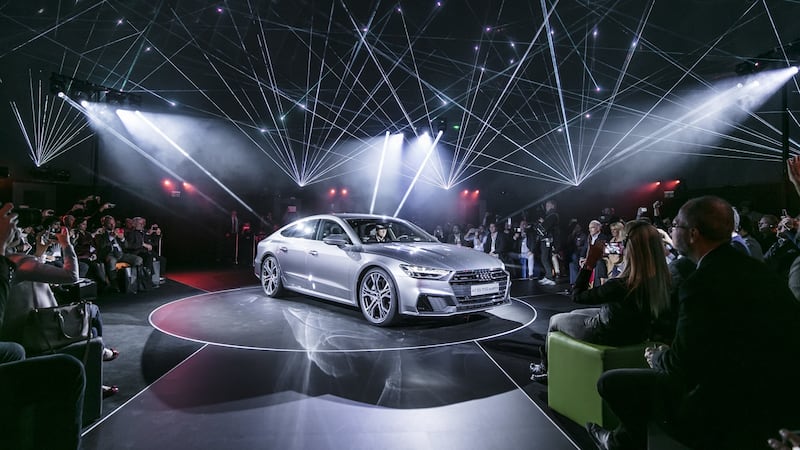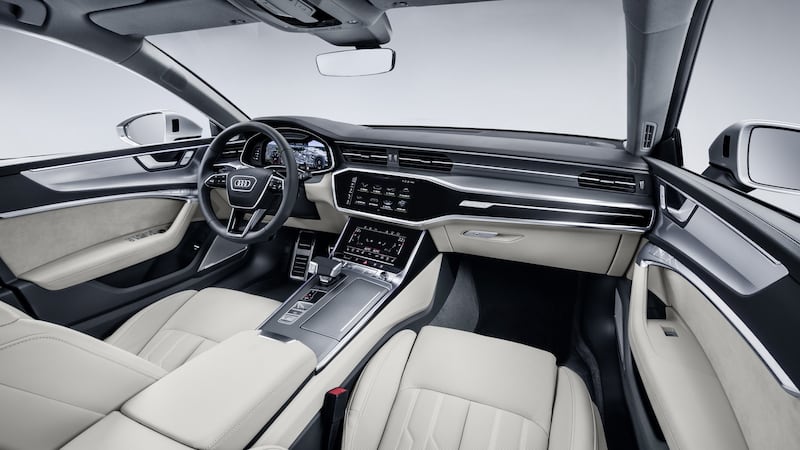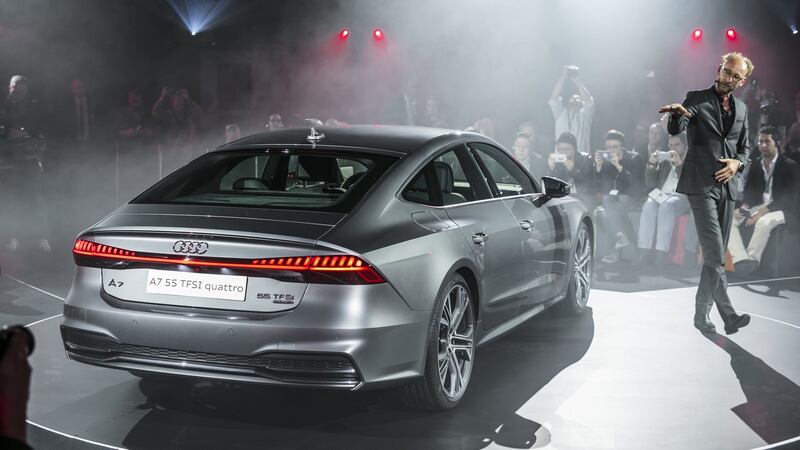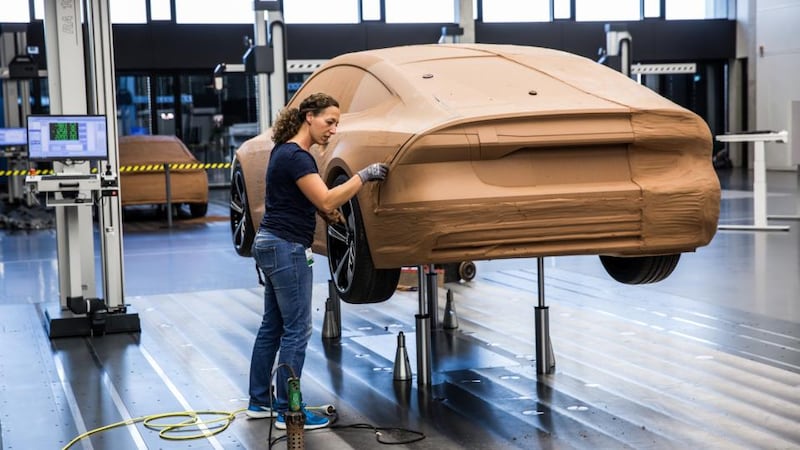Audi has its focus firmly on an electric future. Its chairman, Rupert Stadler, told The Irish Times he is excited by the electrification of models coming down the line. He said the firm is working closely with its sister brand Porsche to deliver premium vehicles but is confident that the Audis will have their own identity.
By 2025 Audi will have more than 20 electric or partly electric vehicles in its line-up. Stadler is confident Audi will meet its target of becoming the leading SUV brand by 2025, with every second Audi produced being a sport or crossover utility vehicle. It's an ambitious target, particularly as its rivals Mercedes-Benz and BMW are galloping ahead with plans to expand their range of models as well.
Closer to Irish showrooms right now is the unveiling of the new A7 Sportback grand tourer. The A7 has always cut a dash, being far more than just an A6 with notions. The new car is a significant step forward for the VW Group brand.

Although it's missing a plug-in option right now, all new A7s get a clever MHEV system that reduces emissions and allows the automatic to coast with its engine off
Although it’s missing a plug-in option right now, all new A7s get a clever 48V mild hybrid electric vehicle, or MHEV, system that reduces emissions and allows the automatic to coast with its engine turned off. The system restarts the engine as required using self-generated lithium-ion battery power via a belt alternator starter. Engine stop-start can now activate at up to 22km/h.
Although this technology is impressive, the fuel saving, of up to 0.7l per 100km, is minimal. Four- and six-cylinder TDI engines will feature in a traditionally diesel-dominated sector in Ireland. High-performance petrol TFSI units will feature on the S7 and RS7 versions.
The new A7 has an imposingly squat stance on the road thanks largely to a wider track and bigger wheels. It all adds to the sense of the car’s being glued to the road. The A7’s love-it-or-loathe-it sloping rear end was remain a talking point, but a new single tail light adds some impressive theatre. The light-in-motion LED strip that runs right across the back of the car will have owners locking and unlocking their cars just for show.
The lighting-design team at the firm's head office, in Ingolstadt, has moved the illumination game on considerably – and Audi's latest laser-LED headlights are literally brilliant. Cesar Muntada, the team's head, is passionate about his "phigital" – physical and digital – approach to light, and although computers play a huge part in development, he says, Audi still uses a blackboard and chalk at the early stages of designing light clusters. Not what one would expect from a firm that's pushing digital screens on nearly every flat surface of its cars these days.

Ulrich Beierlein’s new A7 cabin is a radical change and instantly impressive, with the same design theme as the latest flagship A8. The virtual-cockpit driver’s display is impressive – but it’s not the star of the show. Flush, driver-orientated central digital displays that appear from darkness demonstrate a move away from rotary dials and buttons.
A senior interior designer described the interactive experience as being flatter and smartphone-like in its overall finish. You’ll need to take a series of night classes at your local institute of technology to fully appreciate the complexity of the new display systems. Each screen can display up to 5,000 pages, for example, each of which had to be designed. Even during our crash course we started to suffer from information overload.
Thankfully, as long as you can handle a smartphone or tablet you’ll find it easy to interact with the A7’s main controls. Touching one of the two large (10.1in and 8.6in) central touch screens creates some reaction from the icon you’ve pressed; a firmer press delivers that action, as you hear a click and feel a gentle vibration. The car’s key stores various user profiles, so everything can be customised to your individual tastes.
A nice touch – no pun intended – is that if you keep your finger on an icon you can then use the entire screen to make adjustments, turning air conditioning or music up or down, for example.
The lower screen has a virtual keyboard – or you can write on it freehand, a feat that only left-handed drivers or guitarists find easy in right-hand-drive cars. The new A7 allows you to write each letter of a word over the last one without pausing, which makes entering addresses or searching contacts much easier. Voice interaction is much improved. You can now say things like “I’m cold” and the car will turn up the heating.

The A7 has 39 new safety and assistance systems that will be available in various extras packs. A blank button on the cars we saw will, at some stage in 2018, house the switch for an artificial-intelligence system that will enable the car to park itself or follow slow-moving traffic autonomously, for example. Five cameras and a laser scanner combine with multiple radar and ultrasonic sensors to facilitate these functions. So-called level-three semi-autonomous driving will feature too. The rollout of these features depends on legislation, and there is no clear EU ruling so far to prompt member states to take action, but it is coming.
The Irish Times was given a tour of Audi's new design building at Ingolstadt prior to its being locked down against prying eyes as it becomes fully operational: the world of car design is highly secretive. It was Audi's new computer system that impressed most. It can make virtual designs look entirely real on screen, allowing shadows, colours, scale, contouring and every other aspect of a car to be precisely manipulated. Tasks that once took two hours now take 2.5 seconds, according to Audi. Once a design is signed off the computer can cut a full-size clay model via a robotic lathe. Thankfully, old-school clay models still have a cherished place in car design, as they allow hands-on fine tuning.

High tech aside, the A7 remains a practical car. The large hatchback opens electronically to reveal a shallow boot with 535l of space – or up to 1,390l with the rear seats folded down. The cabin is spacious for four adults, and the driving experience should be one of a slightly sporty cruiser. The A7 gets four-wheel steering, which we’re looking forward to testing. New seating and interior materials are all premium level too.
The niche A7 was first launched in late 2010 into the premium four-door-coupé market. With the Mercedes-Benz CLS as its only price-competitive rival, the A7 leads its class. Prices for the new car are yet to be set; the outgoing model, 561 of which have been sold in Ireland, starts at €67,610. The new A7 will launch in Ireland in March 2018, hot on the heels of the new A8. The 3l 231hp TDI is the expected bestseller here.









